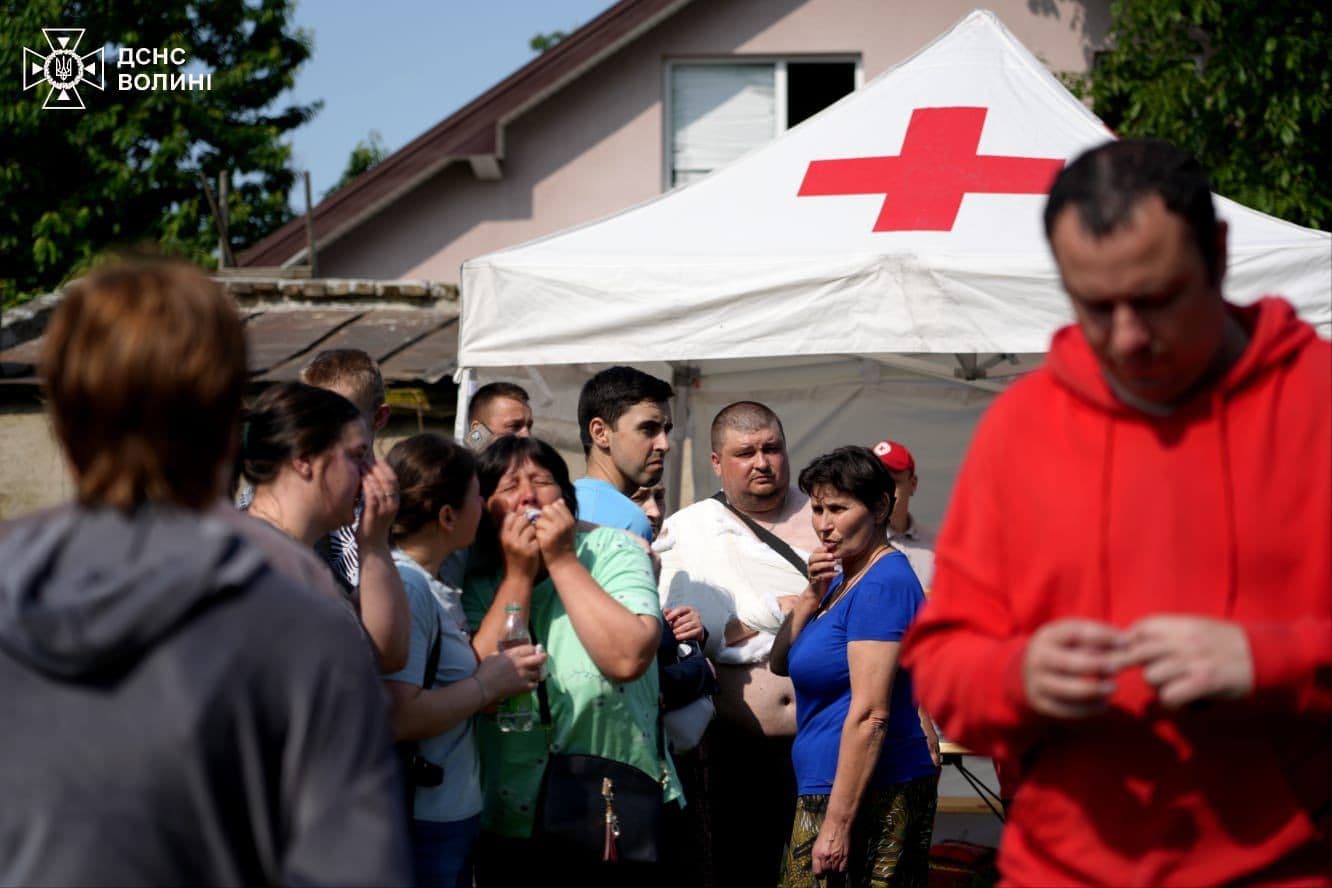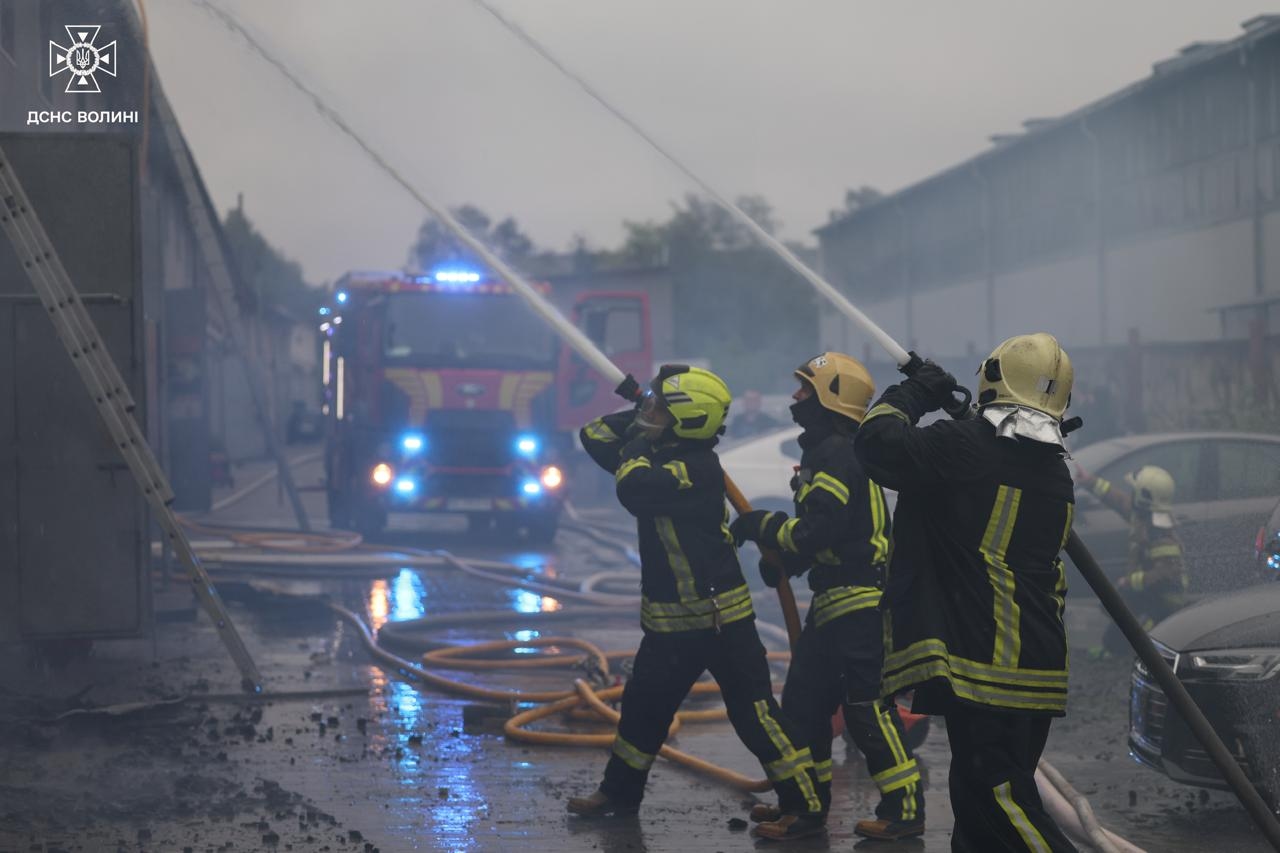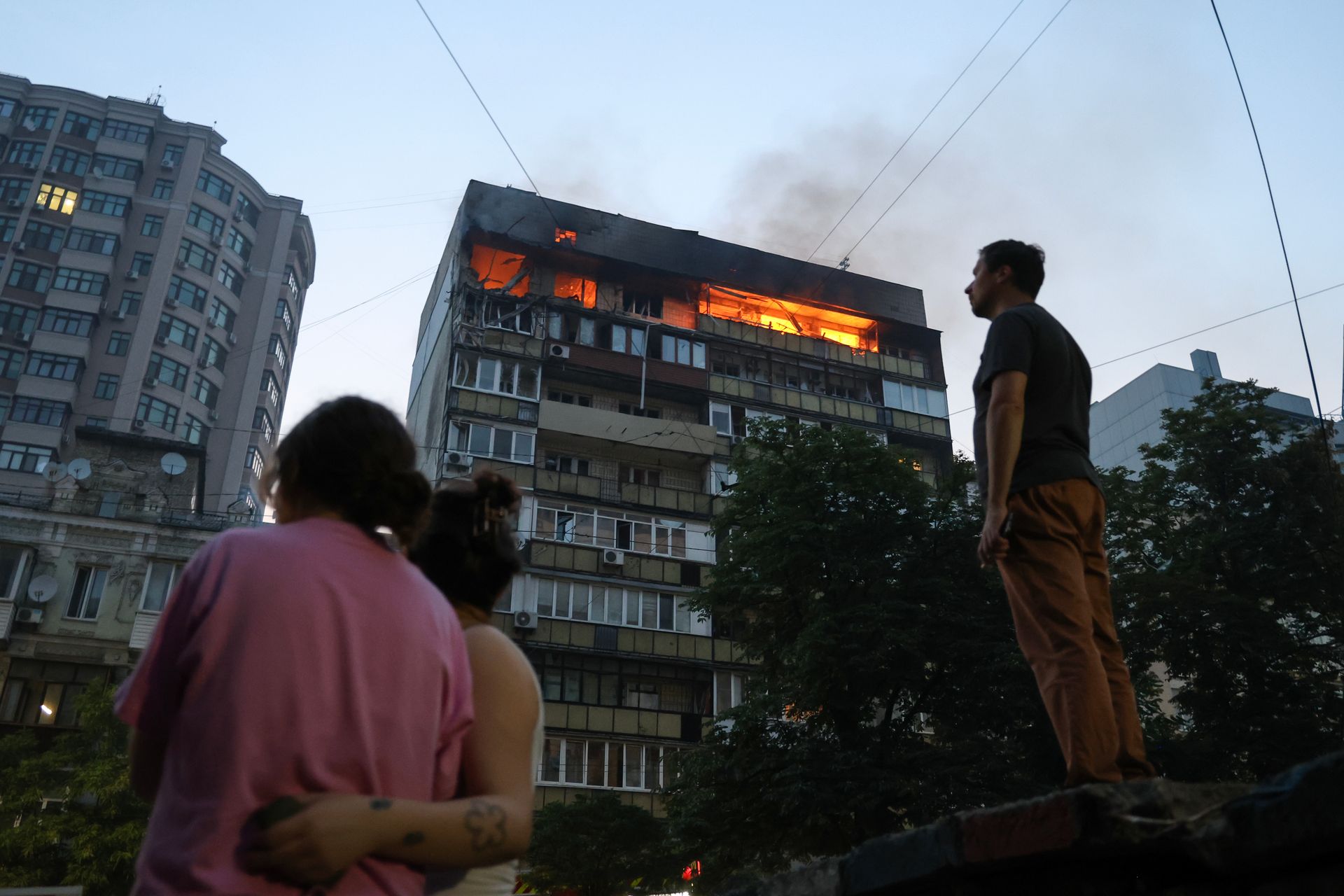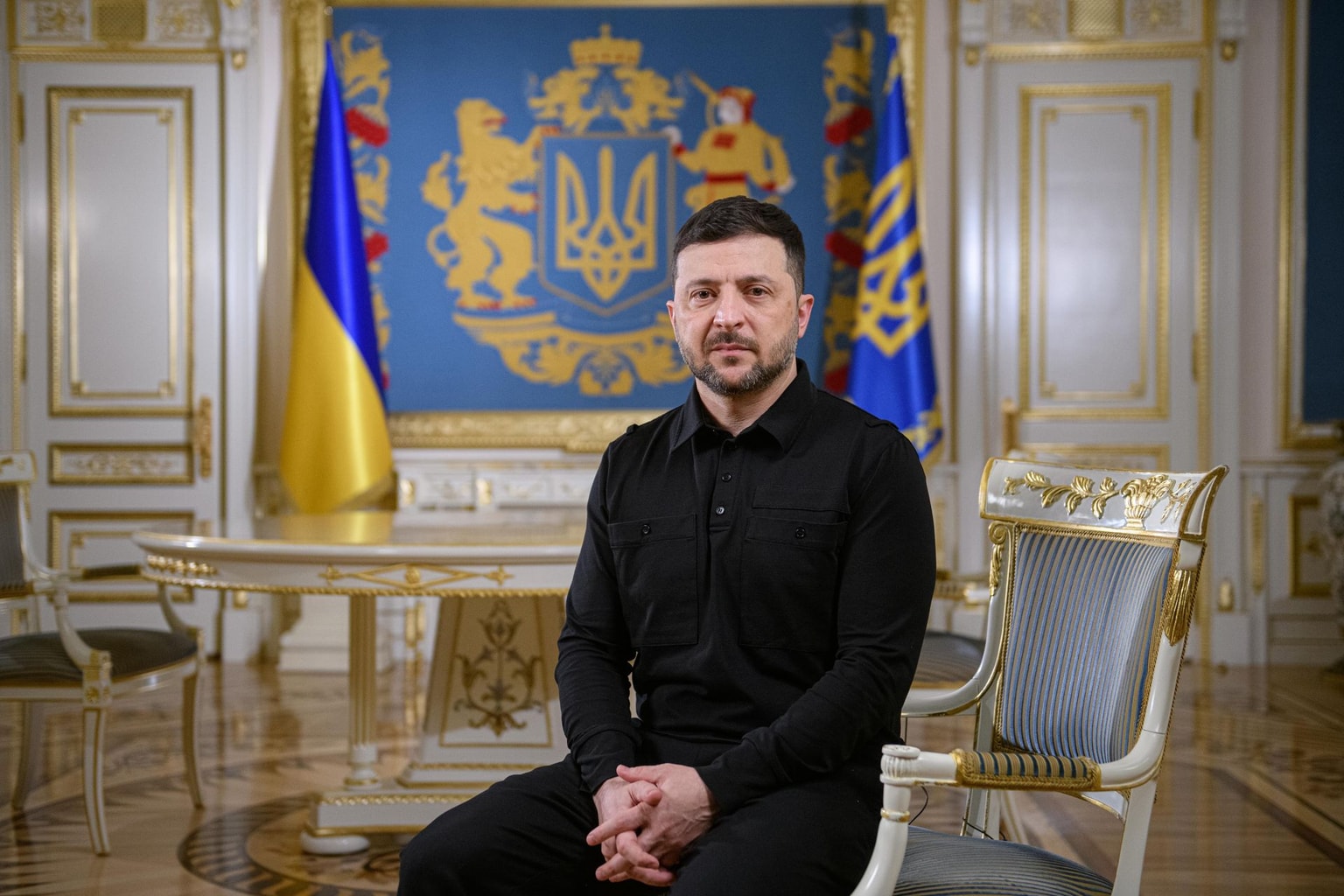
After years of relative calm, a western Ukrainian city comes to terms with being in Russia's crosshairs
People gather at an aid station in Lutsk after a mass Russian attack on June 6 (State Emergency Service/Facebook)
Editor's note: Journalists from misto.media contributed to the reporting of this article.
Located in far-western Ukraine, just 90 kilometers from the Polish border, the city of Lutsk in Volyn Oblast has largely avoided the mass Russian missile and drone attacks that regularly terrorize cities further east.
That has all changed over the last few weeks as Russia ramps up aerial attacks across the country, with Lutsk being struck heavily on June 6, and then little over a month later on July 9.
During the June 6 attack, 30 people were injured, and a couple, a 26-year-old man and his 24-year-old fiancee, were killed.
It wasn't the first time Russian missiles and drones wreaked havoc in Lutsk — in August 2023, three people were killed in a missile strike on the city, and almost exactly a year later, five people were injured, one killed in another attack.
But the scale of recent strikes, the apparent increase in frequency, and the wider context of massively escalating Russian aerial attacks across Ukraine have rattled the city's residents.
"For the first time in my two-and-a-half years of living in Lutsk, I went to a shelter," 26-year-old Antonina Stetsenko told the Kyiv Independent the morning after the July 9 attack, describing the experience as "terrifying."
"I woke up to the sound of a Kinzhal (Russian hypersonic) missile strike and realized I had to go. The closest shelter to me was the cathedral," she added.

Around midnight, a strong thunderstorm covered Lutsk, but the sound of thunder was soon replaced by drones and missile explosions.
"I woke up because of the air alarm at 1:55 a.m. Between 2 and 3 a.m., I could no longer distinguish between a thunderstorm and an air attack," 30-year-old Lutsk resident Yaroslava Savosh-Davydova, told the Kyiv Independent.
"Our ‘shelter’ was the corridor of an apartment on the 4th floor. The windows were curtained, flowerpots were removed. It was very loud. Air defense was working," she added.
"I heard a Shahed drone howling, and I reassured myself that if I heard this sound above my head, it means that the beast has flown on and we are alive."
Kardash Mykhailo, 46, told the Kyiv Independent he was not too worried when he first heard the air raid sirens, a regular occurrence across Ukraine that don't always signify a mass attack.
But he changed his mind when monitoring channels on Telegram reported missiles heading towards Lutsk, waking his wife and 10-year-old child and heading to a shelter in a nearby theater.
"Last time (June 6), when a missile hit the residential building, we didn’t go to a shelter. But this time, we decided to go, because we had learned from that experience," Mykhailo said.
"Everyone was glued to Telegram channels, reading the news. At first, we didn’t even realize that so many Shaheds had been aimed specifically at Lutsk," he added.

The attack would become the largest aerial assault on Ukraine since the beginning of Russia's full-scale invasion.
Russian forces deployed 728 Shahed-type attack drones and decoys, as well as seven Kh-101 or Iskander-K cruise missiles and six Kinzhal missiles, the Air Force reported.
Ukrainian air defenses shot down 296 drones and all seven cruise missiles, while 415 drones disappeared from radars.
"Nearly everything was aimed at Lutsk," Volyn Oblast Governor Ivan Rudnytskyi said.
Lutsk Mayor Ihor Polishchuk said that a fire damaged an "industrial site" as well as a garage, in what he called the "most massive Russian attack" on the city since the start of full-scale war.
In some places, all that remained were skeletal frames of buildings, Tetiana Pryimachok, editor-in-chief of Lutsk-based misto.media told the Kyiv Independent. Drone debris lay scattered across the city.
Perhaps due to the increased caution in the city, there were no casualties in Lutsk, but the targeting of the city has raised an obvious question in the city — why now?
"Maybe to demoralize everyone once again? To trigger the PTSD of internally displaced people there? To heighten the anxiety of relocated businesses? To scream, with a mix of sirens, buzzing, and stench, that there is no safe place? To terrorize people into being utterly ineffective at work the next day?" Savosh-Davydova said.
"This is an attempt to undermine the rear, because there is a large concentration of logistics and people here who are helping the front," she added.
As Russia's aerial attacks increase across the entire country, there is likely something in Savosh-Davydova's theory.
On July 10, Russia launched a mass attack against Ukraine for the second night in a row, rocking Ukraine's capital and cities far from the front lines. At least two people were killed and 25 were injured, just the latest of Russia's escalating strikes against civilian population centers..
"Back in 2015, a wounded soldier in a military hospital told me 'this is a war of attrition.' And ten years later, I am shocked by how brutal the methods have become," Savosh-Davydova said.










